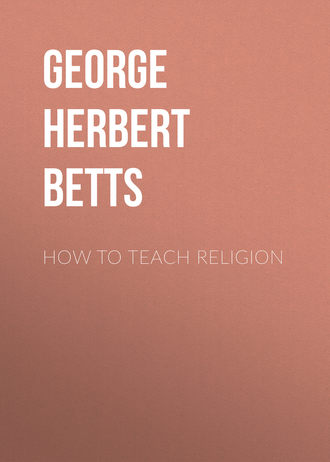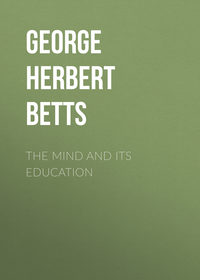 полная версия
полная версияHow to Teach Religion
Much is to be learned from the technique of Jesus's teaching, imperfect though the account is of his instruction. He always met his hearers on the plane of their own lives. He would begin his instruction with some common and familiar experience, and lead by questions or illustrations to the truth he wished to present. In this way, without the use of technical words or long phrases, he was able to teach deep and significant truths even to relatively uninformed minds. Jesus appealed to the imagination through picturesque illustrations and parables. He made his hearers think for the truth they reached, and so presented each truth that its application to some immediate problem or need could not be escaped. He was always interesting in his lessons, for they did not deal with unimportant matters nor with tiresome platitudes. He never failed to have definite aim or conclusion toward which his teaching was directed, and the words or questions he used in his instruction moved without deviation toward the accomplishment of this aim. He was too clear, too deeply in earnest, and too completely the master of what he was teaching ever to wander, or be uncertain or to waste time and opportunity. He felt too compelling a love for those he taught ever to fail at his task.
Finally, Jesus was himself the embodiment of the truths and ideals he offered others. He lived the lessons he desired his pupils to learn. He rendered concrete in himself the religion he would have his followers adopt. His life was a lesson which all could learn and follow.
1. Which type of recitation method do you most commonly employ? Which do you like best? Do you combine the several methods occasionally in the same recitation? Do you plan which is best for each particular occasion?
2. To what extent do you use the topical method? Do your pupils succeed in discussing the topics with fair completeness? Do you always supplement with matter of your own, or expand the topics by asking questions when the discussion has been incomplete?
3. Stenographic reports of various recitations have shown that teachers often themselves use from two to three or four times as many words in the lesson hour as all the pupils combined. Do you believe that for young pupils this is good teaching? Have you any accurate notion of the time you yourself take? Do you talk too much?
4. Study your questioning in the recitation and determine as well as you can which of the principles of good questioning you are most successful in applying; which you are least successful in applying.
5. To what extent do you use the story as a method of instruction? How do you judge you would rank as a story-teller? To what extent have you studied the art of story-telling? Are you constantly improving? What difference have you noted in the interest of a class when a story is told and when it is read?
FOR FURTHER READINGBetts, The Recitation.
Hamilton, The Recitation.
Home, Story-Telling, Questioning and Studying.
St. John, Stories and Story-Telling.
Houghton, Telling Bible Stories.
1
The point of view and in some degree the outlines of this and several following chapters have been adapted from the author's text "Class-Room Method and Management," by permission of the publishers, The Bobbs-Merrill Co., Indianapolis.
2
God the Invisible King, p. 44.



